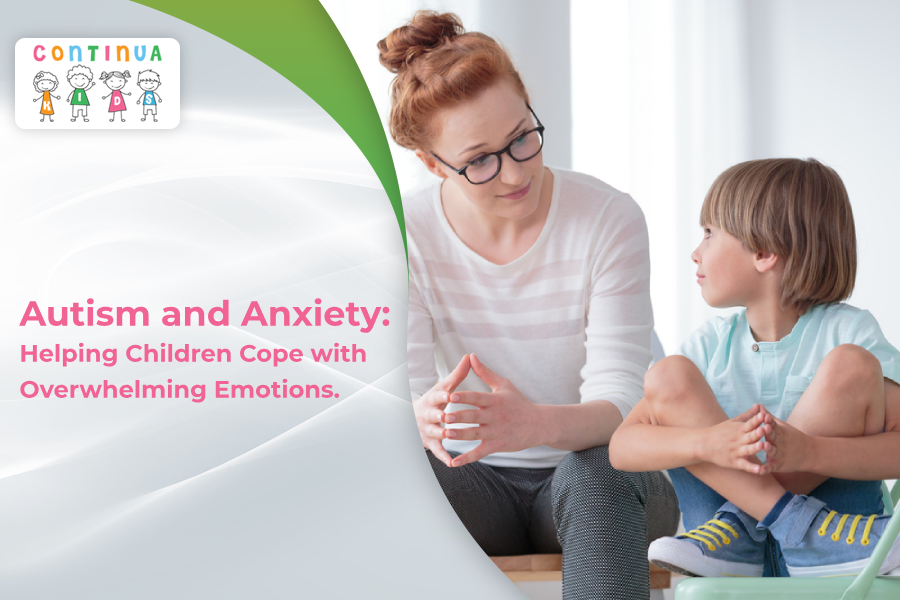Early Intervention for Children with Autism Spectrum Disorders
Early intervention for children with autism spectrum disorders – Autism spectrum disorders (ASD) is a chronic neurodevelopmental disorder that affects the social, communication and patterns of interest and behaviors in an individual which requires extensive educational, vocational and community based support and interventions (1). When we talk of Autism spectrum disorders we always advocate early screening and early identification.
The high prevalence of 1in 68 (2) gives us enough reason screen and diagnose early. The goal is to be able to guide the parents with evidence based intervention to promote optimal development of the child. Some of the questions that are most commonly asked by professionals, parents and caregivers are
How soon can we detect Autism Spectrum Disorders (ASD) symptoms?
Here are some evidence based screening tools used for screening children. Those at risk can be detected as early as at 12 months of age. However the most important recommendation in routine clinical practice is to conduct regular check on the developmental milestones and/or using an evidence-based broadband developmental screener, for example, Ages & Stages Questionnaire, Developmental profile-3, etc. Once the red flags for developmental delay and early autism behaviors are detected on routine developmental screening or any concern in the child’s development being reported by parents or caregivers the clinician must know whom to send for a detail assessment. The person conducting detail assessment should have adequate resources, the length and limitation of the screening should be shared with the caregiver and lastly rescreening and monitoring of the developmental delay and autism symptoms should be practiced with proper maintenance of the records.
Screening for children regardless of their risk level for developmental disabilities
Age group 18 – 24 months.
“Learn the signs act early” by Centers for Disease Control and Prevention\’s National Center on
Birth Defects and Developmental Disabilities (NCBDDD) (3) is autism specific screening
The Modified Checklist for Autism in Toddlers (M-CHAT) (4) which has now been revised as the
M-CHAT-R/F (5). The M-CHAT-R/F is a screening tool for all children regardless of their risk level for developmental disabilities, including ASD.
Age group: 12- 18 months
The ITC (Infant toddler checklist) identifies itself as such a screener, while the FYI (first Year Inventory) endeavors to be autism-specific. (6) These have their own set of limitations and are still under research.
How early can we start intervention?
Current best practices for interventions for children aged 3 years with suspected or confirmed
ASD should include a combination of developmental and behavioral approaches and begin as early as possible. There should be active involvement of families and/or caregivers as part of the intervention. (8)
Why early intervention for children with autism spectrum disorder?
The early years of life is a developmentally critical period of life especially in children with ASD. It is a dynamic period for brain growth, with an increase in brain volume. The atypical connections associated with ASD first emerge, but it is also a time of substantial neural plasticity thereby providing greater potential to alter developmental course. A proportion of children with ASD reportedly regress in the second year. There are research based evidences that support the efficacy of early intervention for improving outcomes for children with ASD (9, 10).
How to choose the right intervention?
Intervention approach should be developmentally appropriate, must be developed considering the sociocultural beliefs of the family and family dynamics and supports.
The economic capability, in terms of both the delivery and assessment must be kept in mind. Interventions should enhance developmental progress and improve functioning related to both the core and associated features of ASD, including social communication, emotional/ behavioral regulation, and adaptive behaviors. Intensity of intervention recommended is a minimum intensity of 5 hours a day, 5 days a week (7).
What factors can influence the intervention services?
The intervention may be influenced by the degree to which parents are implementing the strategies in natural routines throughout the day. The effectiveness of interventions is also likely to be influenced by whether training and ongoing supports allow parents to correctly implement the treatment strategies. Other factors can affect the extent to which such interventions are effective, including age, degree of impairment, and the extent to which the child receives other services. Medical disorders that may affect a child’s clinical presentation (especially behavior) and response to an intervention must not be ignored. (8)
References:
- Autism Spectrum Disorder 299.00 (F84.0) (DSM-V, American Psychiatric Association, 2013; Retrieved from Autism Speaks: https://www.autismspeaks.org/what-autism/diagnosis/dsm-5- diagnostic-criteria).
- Centers for Disease Control and Prevention. Autism and developmental disabilities monitoring network surveillance year 2010. Prevalence of autism spectrum disorders— Autism and Developmental Disabilities Monitoring Network, 11 sites, United States, 2010. MMWR Surveillance Summary. 2014;63(SS02):1–21.[PubMed]
- Centers for Disease Control and Prevention. Learn the Signs. Act Early, 2015,https://www.cdc.gov/ncbddd/actearly.
- Robins D. L., Fein D., Barton M. L., Green J. A. The Modified Checklist for Autism in Toddlers: an initial study investigating the early detection of autism and pervasive developmental disorders. Journal of Autism and Developmental Disorders. 2001; 31(2): 131–144. doi: 10.1023/a:1010738829569. [PubMed]
- Robins D. L., Casagrande K., Barton M., Chen C.-M. A., Dumont-Mathieu T., Fein D. Validation of the modified checklist for autism in toddlers, revised with follow-up (MCHAT-R/F) Pediatrics. 2014; 133(1):37–45. doi: 10.1542/peds.2013-1813. [PMC free article] [PubMed]
- Patricia O. Towle 1, 2, * and Patricia A. Patrick 1, 2, 3 Autism Spectrum Disorder Screening Instruments for Very Young Children: A Systematic Review.
- National Research Council. Committee on Educational Interventions for Children with Autism, Division of Behavioral and Social Sciences and Education. In: Lord C, McGee JP, eds. Educating Children With Autism. Washington, DC: National Academy Press; 2001
- Early Intervention for Children with Autism Spectrum Disorder under 3 Years of Age: Recommendations for Practice and Research Lonnie Zwaigenbaum, Margaret L. Bauman, Roula Choueiri et.all. PEDIATRICS, Official Journal of the American academy of Pediatrics October 2015, VOLUME 136 / ISSUE Supplement 1.
- Brain growth across the life span in autism: age-specific changes in anatomical pathology.Courchesne E, Campbell K, Solso S Brain Res. 2011;1380:138–145pmid: 20920490
- Early behavioral intervention, brain plasticity, and the prevention of autism spectrum disorder. Dawson G. Dev Psychopathol. 2008; 20(3):775–803pmid:18606031.
- Intervening in infancy: implications for autism spectrum disorders. Wallace KS, Rogers SJ J Child Psychol Psychiatry. 2010 Dec; 51(12):1300-20. [PubMed]
Potential neural mechanisms underlying the effectiveness of early intervention for Children with autism spectrum disorder Katherine Sullivan,a Wendy L. Stone,a and Geraldine Dawsonb,Res Dev Disabil. 2014 Nov; 35(11): 2921–2932.




